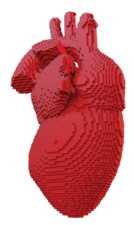An inexpensive open source 3D printer
Open Hardware – Printy

© Lead Image © Kirill Cherezov, 123RF.com
Printy offers an inexpensive, open source DIY 3D printer kit, with a license that paves the way for future open source solutions.
If a single technology defines crowdfunding and open hardware, it would be 3D printing. Not only did 3D printers appear at about the same time as crowdfunding and open hardware, but the demand for cheaper 3D printers has always been high. Even more importantly, 3D printers are a way for other open hardware projects to print cases and replacement parts, overcoming the problems of manufacturing hardware. Kickstarter alone lists 685 projects related to 3D printing over the last decade – however, most are proprietary, only 37 are open source and even those may use obsolete technologies [1]. Jay Lin's Printy project [2] is an attempt to bridge that gap with an inexpensive do-it-yourself open hardware kit (Figure 1) whose crowdfunding campaign will be underway by the time this magazine hits the newsstands.

Printy's Crowd Supply page spells out the current situation: "SLA [Stereolithography] 3D printers are not only expensive, they are typically proprietary. For an enthusiast trying to find the right balance between low cost, high print quality, and open source design, the best advice one could offer has long been 'pick one'. The current market has left the 3D printer community stranded in a disconnected ecosystem full of walled gardens. With Printy, we aim to dismantle those walls and help reconnect that community. And what better way to share the joy of 3D printing than by first sharing the joy of building a 3D printer?"
[...]
Buy this article as PDF
(incl. VAT)
Buy Linux Magazine
Subscribe to our Linux Newsletters
Find Linux and Open Source Jobs
Subscribe to our ADMIN Newsletters
Support Our Work
Linux Magazine content is made possible with support from readers like you. Please consider contributing when you’ve found an article to be beneficial.

News
-
Parrot OS Switches to KDE Plasma Desktop
Yet another distro is making the move to the KDE Plasma desktop.
-
TUXEDO Announces Gemini 17
TUXEDO Computers has released the fourth generation of its Gemini laptop with plenty of updates.
-
Two New Distros Adopt Enlightenment
MX Moksha and AV Linux 25 join ranks with Bodhi Linux and embrace the Enlightenment desktop.
-
Solus Linux 4.8 Removes Python 2
Solus Linux 4.8 has been released with the latest Linux kernel, updated desktops, and a key removal.
-
Zorin OS 18 Hits over a Million Downloads
If you doubt Linux isn't gaining popularity, you only have to look at Zorin OS's download numbers.
-
TUXEDO Computers Scraps Snapdragon X1E-Based Laptop
Due to issues with a Snapdragon CPU, TUXEDO Computers has cancelled its plans to release a laptop based on this elite hardware.
-
Debian Unleashes Debian Libre Live
Debian Libre Live keeps your machine free of proprietary software.
-
Valve Announces Pending Release of Steam Machine
Shout it to the heavens: Steam Machine, powered by Linux, is set to arrive in 2026.
-
Happy Birthday, ADMIN Magazine!
ADMIN is celebrating its 15th anniversary with issue #90.
-
Another Linux Malware Discovered
Russian hackers use Hyper-V to hide malware within Linux virtual machines.

